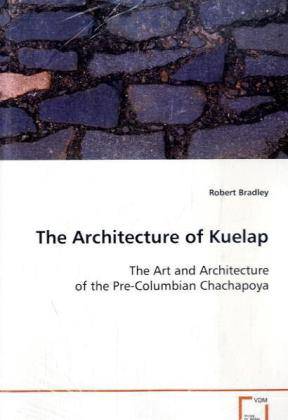
Door een staking bij bpost kan je online bestelling op dit moment iets langer onderweg zijn dan voorzien. Dringend iets nodig? Onze winkels ontvangen jou met open armen!
- Afhalen na 1 uur in een winkel met voorraad
- Gratis thuislevering in België vanaf € 30
- Ruim aanbod met 7 miljoen producten
Door een staking bij bpost kan je online bestelling op dit moment iets langer onderweg zijn dan voorzien. Dringend iets nodig? Onze winkels ontvangen jou met open armen!
- Afhalen na 1 uur in een winkel met voorraad
- Gratis thuislevering in België vanaf € 30
- Ruim aanbod met 7 miljoen producten
Zoeken
The Architecture of Kuelap The Art and Architecture of the Pre-Columbian Chachapoya
The Art and Architecture of the Pre-Columbian Chachapoya
Robert Bradley
Paperback | Engels
€ 77,95
+ 155 punten
Omschrijving
This book is a detailed study of the enormous pre-Columbian ruin Kuelap in the Department of Amazonas, Peru. The text provides a description of this area of northeastern Peru and a narrative historiography of the ruin. From the time of Kuelap's introduction to the modern world in 1843, the Kuelap has always been considered a fortress. This study is a reconsideration of this militaristic framing. The following chapters also critique the belligerent stereotype assigned to the northern Andean highlands for the Late Intermediate Period (1,000 to 1,400 AD). The text also explores the historical digression, concerning Chachapoya studies, caused by this mindset. Theories are then presented which will offer a plausible scenario for the construction and occupation of Kuelap. Were the enormous walls erected to imitate the ubiquitous form in the region, the cliff face? A new iconography for the Chachapoya architectural frieze work is also considered. This system positions these geometric friezes as aspects of the human head: eyes, ears and nose. Closing remarks provide suggestions for continued investigations regarding the ruin.
Specificaties
Betrokkenen
- Auteur(s):
- Uitgeverij:
Inhoud
- Aantal bladzijden:
- 236
- Taal:
- Engels
Eigenschappen
- Productcode (EAN):
- 9783639076196
- Verschijningsdatum:
- 6/10/2008
- Uitvoering:
- Paperback
- Formaat:
- Trade paperback (VS)
- Afmetingen:
- 152 mm x 229 mm
- Gewicht:
- 322 g

Alleen bij Standaard Boekhandel
+ 155 punten op je klantenkaart van Standaard Boekhandel
Beoordelingen
We publiceren alleen reviews die voldoen aan de voorwaarden voor reviews. Bekijk onze voorwaarden voor reviews.











